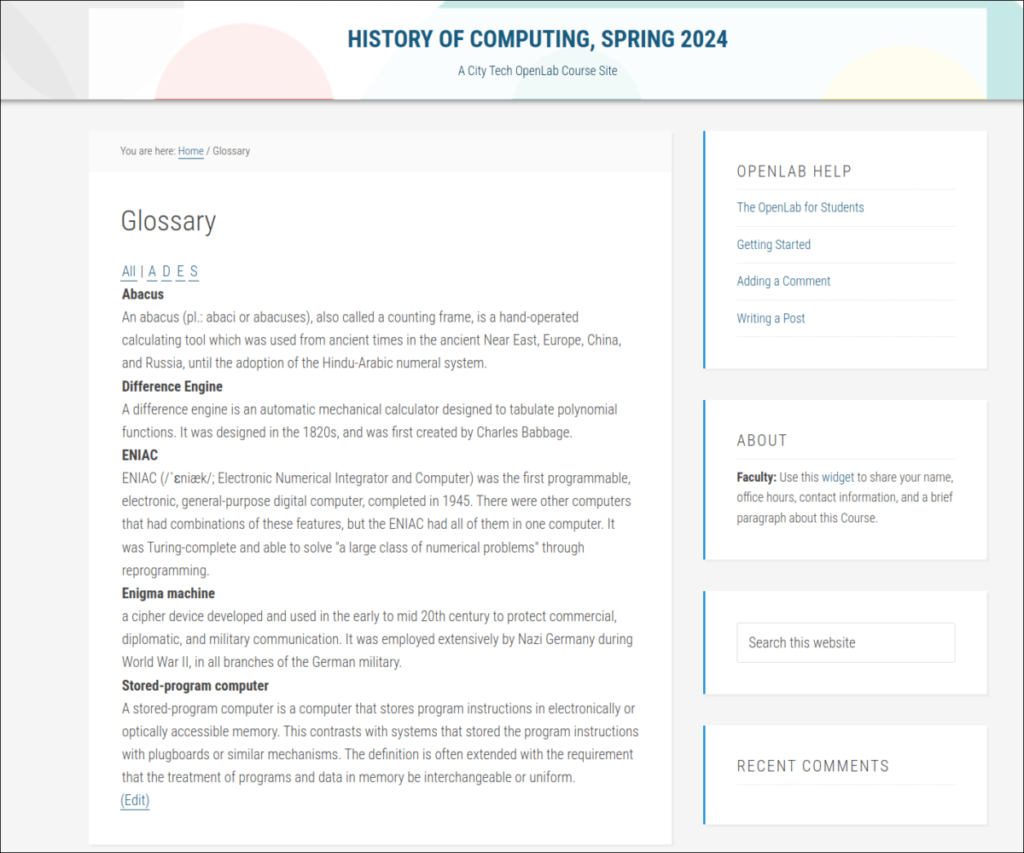Name Directory
This plugin allows you to create a directory of terms or names to add to your site. It would work well for a glossary or index.
1. To get started, activate the Name Directory plugin.
2. In your site Dashboard, choose Name Directory in the left-hand menu.
This is the main Name Directory management page, where you will find all the directories you have created. Notice how there is already a “Bird names” directory there, which comes with the plugin as a demo so you can experiment with it if you want.
Creating your first directory
1. Let’s create our own Directory from scratch. Click the Add directory button or, alternatively, in the sidebar, click Name Directory > Name Directory.
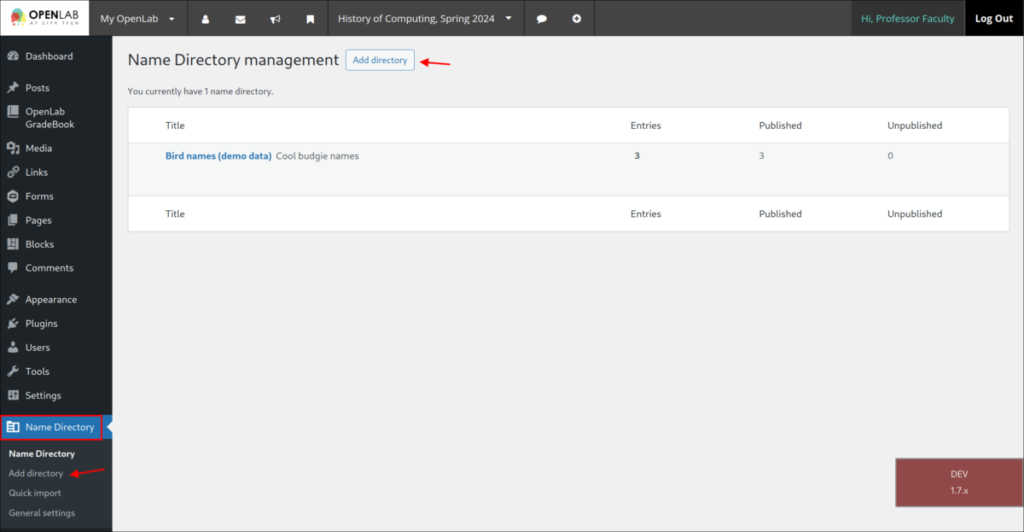
2. Give your directory a title and a description. These are only for your own reference, and won’t show up anywhere once you add your directory to a page or post. If you are not planning to have more than one directory on your site, you can give it a generic name like “Glossary” or “Index” and skip the directory description.
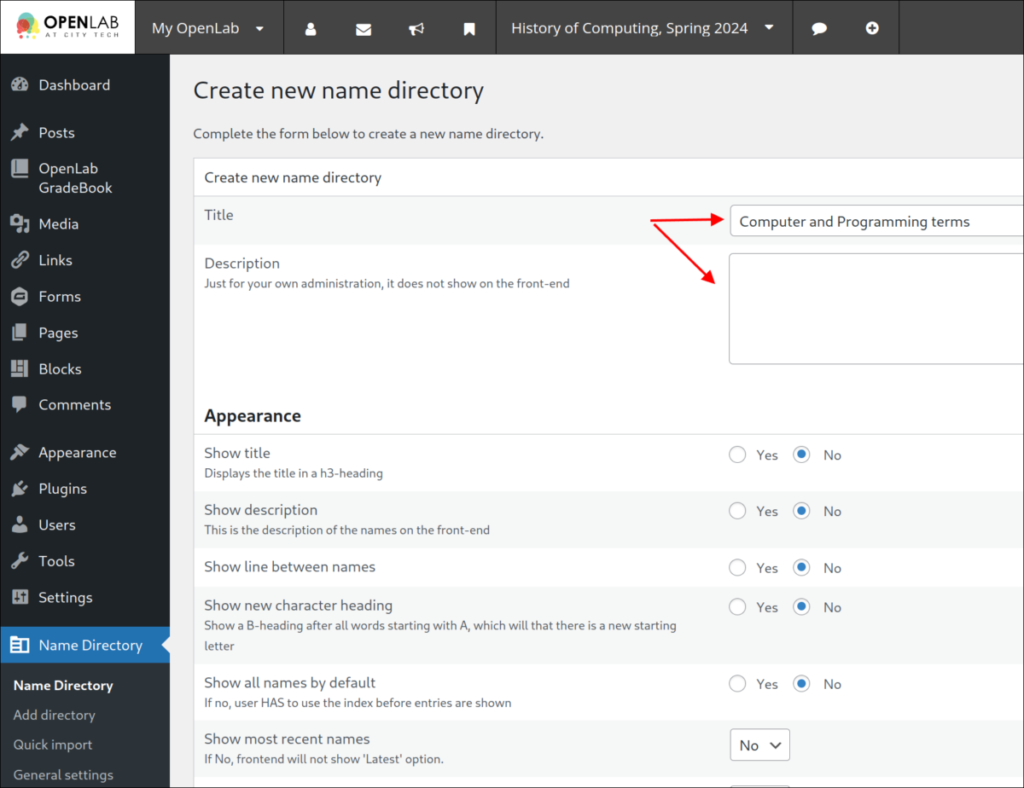
3. Right away, you will notice many settings. Don’t worry too much about them, since they can all be changed later. However, we suggest one change to make now and an additional setting to not change later:
- Select Yes for the setting Show all names by default. Once you have your directory ready, you can play around with these settings and figure out what you want to change. Scroll all the way down and click Create.
- By default Show title is set to No. We suggest that you add your own title rather than using the plugin to show the title. The reason for this is that it is an H3 heading, which might not be the correct heading level. If you add your own title you can choose the appropriate heading level.
4. When you’re ready, click the Create button at the bottom of the page.
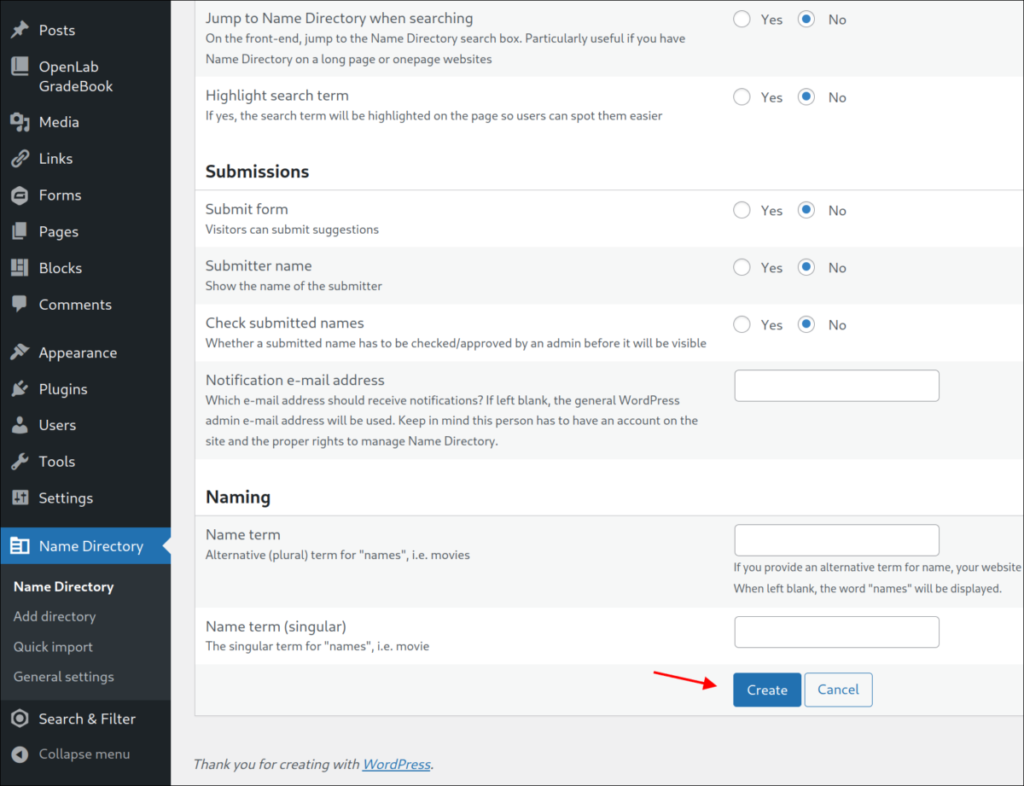
You will be forwarded to the Name Directory management page, where you will now see your new directory listed.
Adding terms to your directory
In this example, I already have a published post about the Enigma machine, and I would like to add that term to my Computer and Programming Terms directory.
1. If you hover your mouse over the name of the directory, options will appear below it.
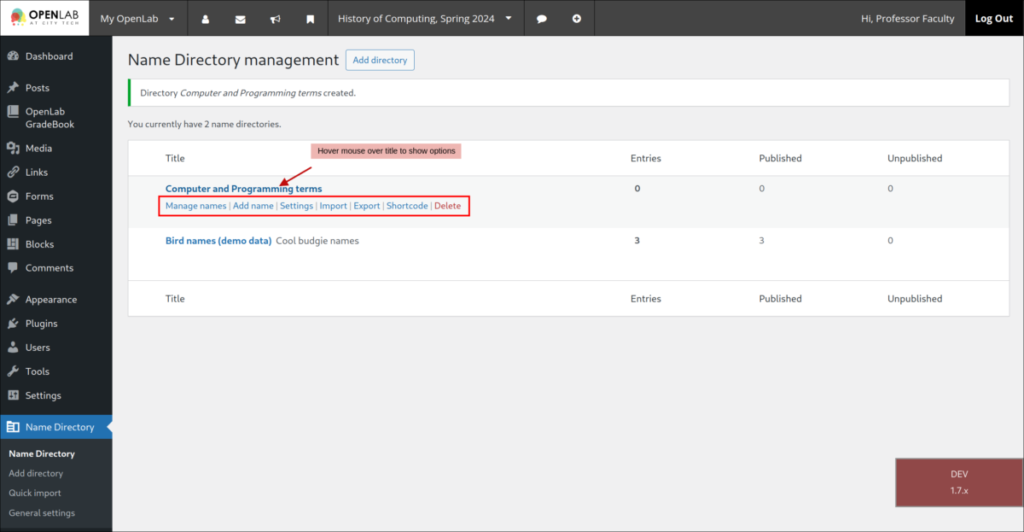
2. Hover over the title and choose Add name. Now, fill Name and Description. The entry description is optional. If you are creating an Index, you probably don’t want to spend time writing each description. In the case of a Glossary, you will want to add descriptions.
3. Keep Published set as Yes so this entry will appear in the Glossary. Alternatively, if you want to add the name/definition but don’t want it to be immediately visible in the site, select No. You can quickly change any name from unpublished to published later.
4. The option to leave it unpublished can be useful if you want to add many names and descriptions to your glossary immediately, but only let users see them on the website gradually, as each concept is discussed in class.
5. If you plan to have contributors to your Name Directory, fill the Submitted by field. If you are the only person writing, you can leave it empty.
6. Click Add name.
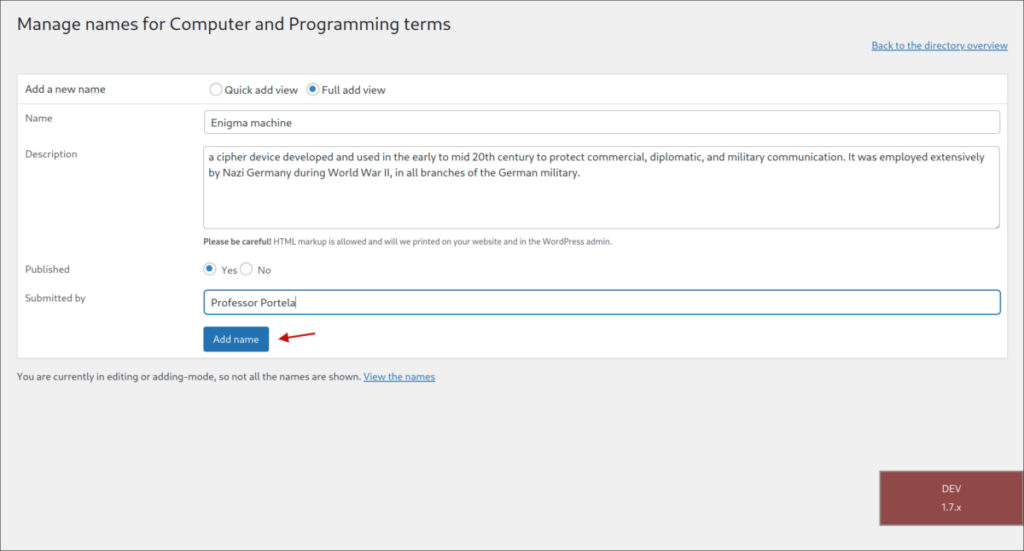
Adding a Name Directory to a Page
In general, pages are a better fit for name directories, but you can follow the same instructions and add it to a post.
1. First, you need to get the shortcode for your directory. In the main Name Directory page (Click Name Directory in the sidebar), hover your mouse over the directory name you’d like to put on the page, and click Shortcode.
2. An explanation will show up with a field containing a shortcode on the side, with something like [namedirectory dir=”3”]. Copy the contents of the field.
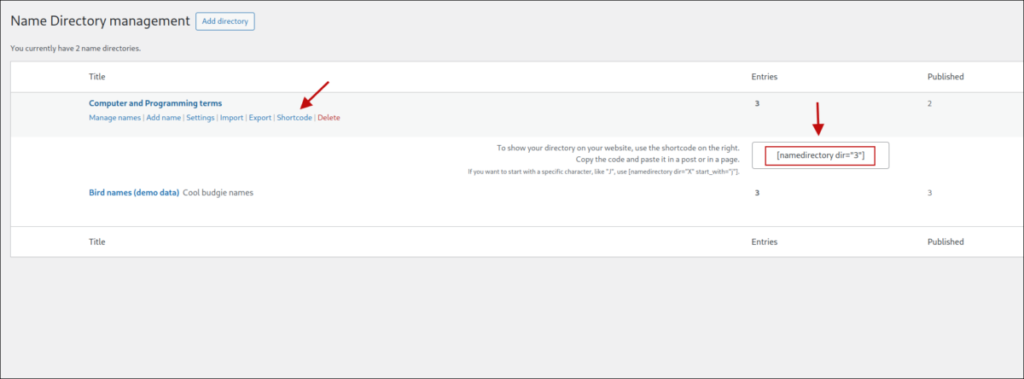
3. Create or open the page/post you want to add your Name Directory to.
4. Add a new block, type “shortcode” on the search field and click the shortcode option.
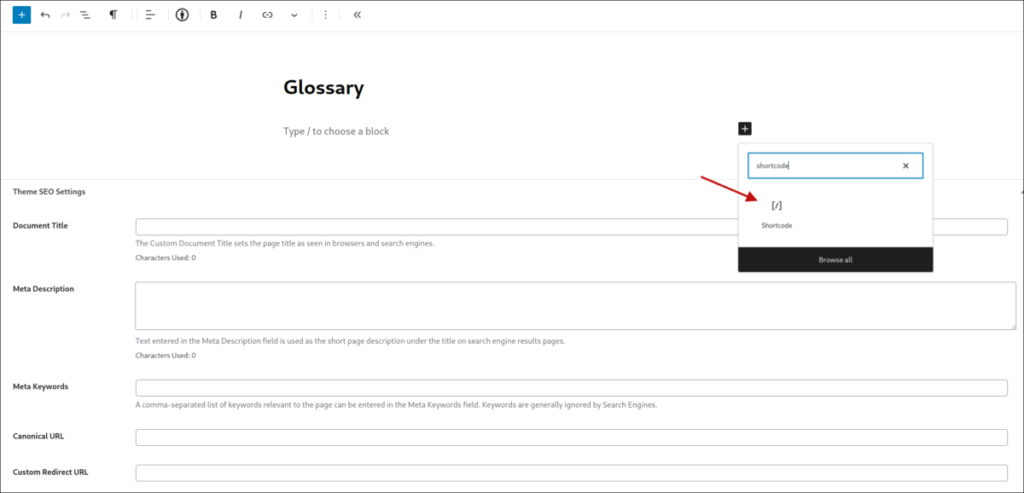
5. Paste the shortcode you copied on instruction number [XXXXX]. Finish creating or updating your page.
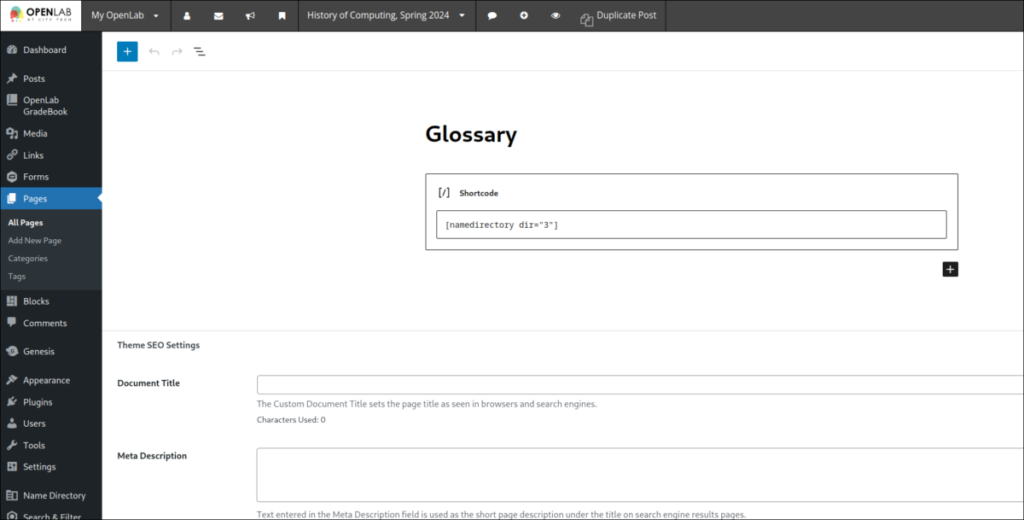
6. The screenshot below shows an example of a Name Directory with Show Description and Show all names by default checked as yes.
